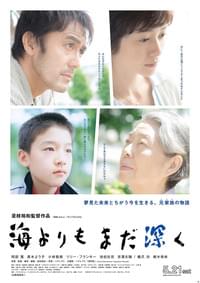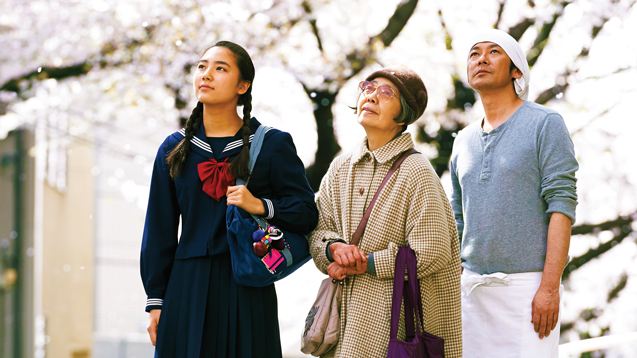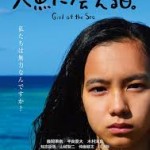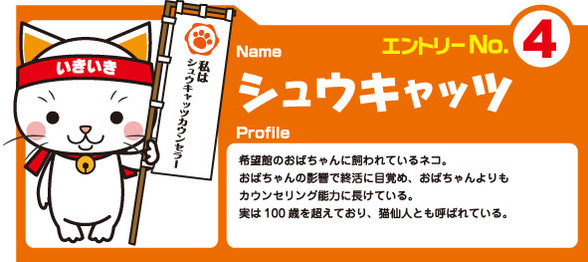WIT Life #303: JAPAN CUTS 2016!
WIT Life is a periodic series written by professional Writer/Interpreter/Translator Stacy Smith (Kumamoto-ken CIR, 2000-03). She starts her day by watching Fujisankei’s newscast in Japanese, and here she shares some of the interesting tidbits and trends along with her own observations.
This week kicked off the 10th year of the JAPAN CUTS film festival at Japan Society, and if the initial films are any indication this year’s lineup looks as stellar as the nine previous. The opening film was Mohican Comes Home, and was introduced by director Shuichi Okita and co-star Atsuko Maeda. They were also both on-hand for a post-screening Q&A, where they revealed behind-the-scenes stories about filming.
Okita’s previous film The Woodsman and the Rain was shown at JAPAN CUTS 2012 (with an appearance by star Koij Yakusho!), and like this film Mohican is set in a rural location. The plot is of a young man (Ryuhei Matsuda) from a small island in Hiroshima, who hasn’t been back in seven years since living in Tokyo, where he scrapes by as the lead singer for a struggling death metal band. He decides to return home for a quick visit with his girlfriend (Maeda), who is pregnant and he intends to marry.
The film features a wacky cast of island characters, including his zany family with the always wonderful Masako Motai as the mother. Akira Emoto plays his father, who we quickly learn has been diagnosed with lung cancer. Matsuda’s character decides to stay longer than planned to take care of his dad. His bumbling attempts at connection are both relatable and touching, and the bonds between Read More
WIT Life #302: New York Japan Cinefest
WIT Life is a periodic series written by professional Writer/Interpreter/Translator Stacy Smith (Kumamoto-ken CIR, 2000-03). She starts her day by watching Fujisankei’s newscast in Japanese, and here she shares some of the interesting tidbits and trends along with her own observations.
Last week I had a chance to check out the 5th annual New York Japan Cinefest, whose mission is to introduce Japanese themed films and discover new talent in filmmaking. In the past I have attended this festival hosted at Asia Society and always loved it, and this year too did not disappoint. I made it to the first night of this two night event, which showcased six short films varying in length from 5 to 40 minutes.
I was most lookin g forward to the final film A Beautiful Person, as it was the newest work from the Kumamoto-born director Isao Yukisada and featured a cast exclusively from Kumamoto (with an appearance from the ubiquitous Kumamon!). I had to laugh once they started speaking as the dialogue was in heavy Kumamoto dialect, adding to the film’s authenticity. The story didn’t captivate me as much as I had hoped it would, but it was like a time capsule as it had been filmed pre-earthquake. Especially after recently going back to Kumamoto and witnessing the horrible damage the castle has undergone, it was really special to see Read More
g forward to the final film A Beautiful Person, as it was the newest work from the Kumamoto-born director Isao Yukisada and featured a cast exclusively from Kumamoto (with an appearance from the ubiquitous Kumamon!). I had to laugh once they started speaking as the dialogue was in heavy Kumamoto dialect, adding to the film’s authenticity. The story didn’t captivate me as much as I had hoped it would, but it was like a time capsule as it had been filmed pre-earthquake. Especially after recently going back to Kumamoto and witnessing the horrible damage the castle has undergone, it was really special to see Read More
WIT Lif #301: 是枝監督の新作!
WIT Life is a periodic series written by professional Writer/Interpreter/Translator Stacy Smith (Kumamoto-ken CIR, 2000-03). She starts her day by watching Fujisankei’s newscast in Japanese, and here she shares some of the interesting tidbits and trends along with her own observations.
I seem to have a knack for timing my business trips to Japan in sync with releases of my favorite director Hirokazu Kore-eda’s films, and this time is no exception. Last night I had the chance to check out 海よりもまだ深く (Umi yori mo mada fukaku) or After the Storm), a welcome addition to Kore-eda’s impressive body of work. It features the familiar cast of characters who can be found throughout the rest of his films, such as Hiroshi Abe and Kirin Kiki paired once again as mother and son, and Lily Franky.
Abe plays Ryota, a character with the same name as the one he played in Kore-eda’s 歩いても歩いても (Aruito mo aruite mo or Still Walking). This Ryota is a formerly award-winner author who barely makes ends meet by gambling and his job as a private investigator. He struggles to pay child support to his ex-wife in order to be able to see his son on a monthly basis. Despite being accustomed to Kore-eda’s leisurely pace, I found the film a bit slow at the beginning. However, as the story unfolded I started to be drawn more into the stories of the characters. Perhaps it was because I’m far from home and missing my own family, but I found my eyes filling with tears during some of the tender family moments. I loved the deceivingly simple but significant shot of Read More
WIT Life #300: Kumamoto earthquakes
WIT Life is a periodic series written by professional Writer/Interpreter/Translator Stacy Smith (Kumamoto-ken CIR, 2000-03). She starts her day by watching Fujisankei’s newscast in Japanese, and here she shares some of the interesting tidbits and trends along with her own observations.
Over a week has passed since the earthquakes down in Kyushu, and things have settled down somewhat but it is still a very scary situation. I spent my time on JET in Kumamoto, so this unexpected disaster was especially hard-hitting. I have a business trip to Tokyo next month, so I’m planning to go down to Kyushu during that time to help out with recovery efforts. It’s hard to be so far away and not be able to do much, but at this point due to the instability the best way to help seems to be donations.
In that vein, here are links to two organizations that are currently accepting contributions. The first is a fund created by the Japanese American Association of NY (JAA, hosting its Sakura Matsuri from 11 am-1 pm at Flushing Meadows Park tomorrow!) devoted exclusively to Kyushu Earthquake Relief (www.jaany.org), and the second is Japan Society’s general Earthquake Relief Fund (www.japansociety.org/page/earthquake).
Finally, here’s the song Kumamoto produced by NY-based jazz pianist Senri Oe and featuring Mamiko Taira on vocals. He wrote this haunting tune right after the disaster as a way to deal with his feelings of helplessness. He describes this music as his own way of providing relief goods, as unlike other supplies a song won’t spoil nor can there be too much or too little of it. It might be just what some people are looking for, and can be accessed by anyone via the Internet. In the spirit of the potential solace it offers, enjoy.
WIT Life #299: Portlandia’s Noodle Monster
WIT Life is a periodic series written by professional Writer/Interpreter/Translator Stacy Smith (Kumamoto-ken CIR, 2000-03). She starts her day by watching Fujisankei’s newscast in Japanese, and here she shares some of the interesting tidbits and trends along with her own observations.
own observations.
Last night IFC’s Portlandia Season 6 finale featured a tsukemen ramen monster taking over the town, with potentially disastrous results. This monster was brought to life when leftover tsukemen noodles, intended to be just dipped and not soaked, were dunked into their broth due to a lack of refrigerator space.
At a meeting deconstructing what happened, the Mayor (Kyle MacLachlan) recognizes that it’s as if the noodles were “baptized against their will.” They then realize that the only solution is to dip the noodles again to restore them to their original form, and one proposal is filling a city pool with ramen broth for this purpose. I found the episode’s overall handling humorous, though the Asian cliches felt a bit hackneyed. In conjunction with the episode, IFC is offering the chance to win 10 years worth of ramen!
WIT Life #298: Sake production and dorayaki creation in film
WIT Life is a periodic series written by professional Writer/Interpreter/Translator Stacy Smith (Kumamoto-ken CIR, 2000-03). She starts her day by watching Fujisankei’s newscast in Japanese, and here she shares some of the interesting tidbits and trends along with her own observations.
This weekend I had the chance to see two fabulous Japanese films being screened here in the city, one documentary and one fiction. The former is The Birth of Sake being shown at IFC, and the latter is Sweet Bean playing at Lincoln Plaza Cinema, both through this Thursday, March 24th.
The Birth of Sake, directed by Erik Shirai who was on hand for a post-screening Q&A, has already won awards at Tribeca and other notable film festivals. I had heard of it in passing a few years back when the Kickstarter campaign raising money for the film took place, and the result is a sneak peek inside the normally cloistered world of sake creation. The film takes an in-depth look at this process carried out by the hard working staff of the 144-year old Tedorigawa Brewery in Ishikawa Prefecture. Their business is unique in that everything is done by hand, whereas the majority of modern Japanese breweries are automated.
Tedorigawa’s workers range in age from 20-70, and one requirement of their grueling job is that they must live at the brewery during the sake-producing six months from October until April (and according to Shirai, due to Tedorigawa’s new popularity thanks to his film, this season has been extended to May!). They are willing to taking time away from their families and home lives to make this sacrifice, and many are veterans of their craft looking to cultivate the next generation of workers. Not only will this film educate viewers about the sake-making process, but it offers a rare glimpse of the people behind it. In particular, I loved the scenes humanizing the workers, like when they were splashing each other in the bath, teasing each other while shopping or breaking out into karaoke after a long day of work.
Dire ctor Naomi Kawase’s 2015 Sweet Bean (あん or an, sweet red bean paste) is a surprisingly tender film about the creation of an equally treasured aspect of Japanese food/drink culture, dorayaki (どら焼き or red bean pancake). This dessert is ubiquitous in Japan, from pre-packaged types found in convenience stores to freshly made dorayaki at food stalls. The film centers on a dorayaki proprietor whose Read More
ctor Naomi Kawase’s 2015 Sweet Bean (あん or an, sweet red bean paste) is a surprisingly tender film about the creation of an equally treasured aspect of Japanese food/drink culture, dorayaki (どら焼き or red bean pancake). This dessert is ubiquitous in Japan, from pre-packaged types found in convenience stores to freshly made dorayaki at food stalls. The film centers on a dorayaki proprietor whose Read More
WIT Life #297: 人魚に会える日 (Girl of the Sea)
WIT Life is a periodic series written by professional Writer/Interpreter/Translator Stacy Smith (Kumamoto-ken CIR, 2000-03). She starts her day by watching Fujisankei’s newscast in Japanese, and here she shares some of the interesting tidbits and trends along with her own observations.
Last week I returned from a short business trip in Japan when Tokyo was enjoying unseasonably warm weather. People were in t-shirts over the weekend, and with 梅 (ume, or plum blossoms) already in bloom an early 桜 (sakura, or cherry blossom) season is predicted for this year (if only I could have stuck around for a few more weeks…). However, this morning’s Japan news reported the weather dipping back down to chillier temps, so who knows when actual blooming will take place. Stay tuned to the 桜前線 (sakura zenzen, or cherry blossom front)!
While in Tokyo I had the chance to check out the film 人魚に会える日 (Ningyo ni aeru hi or Girl of the Sea), made by 20-year old Okinawan director and Keio University student Ryugo Nakamura. He made his debut at age 13 with the film やぎの冒険 (Yagi no bouken or The Catcher on the Shore), and has produced over 30 movies, amazingly prolific for his young age! After debuting in Okinawa, Girl of the Sea had a limited four-day run at the cool venue Eurolive in Shibuya (which also houses the Tokyo Film Academy). Nakamura created the film in collaboration with his classmates over two weeks of their summer vacation.
In the Q&A after the movie he detailed how in addition to the efforts of these classmate volunteers, the actors were kind enough to drive themselves from Naha (Okinawa’s capital city) to the northern city of Nago when they realized how limited the film’s resources were. I was particularly starstruck by the participation of one of my favorite Japanese singers/songwriters, the Okinawan artist Cocco. Nakamura recounted how during an intense scene Cocco has with two high schoolers who were overwhelmed to be acting with her, she put them right at ease.
Girl of the Sea deals with the theme of the proposed Futenma Marine Corps Base relocation and how the base issue affects Okinawans, especially young people. This topic is of extreme interest to me since I Read More
WIT Life #296: Kauai’s Japanese lantern
WIT Life is a periodic series written by professional Writer/Interpreter/Translator Stacy Smith (Kumamoto-ken CIR, 2000-03). She starts her day by watching Fujisankei’s newscast in Japanese, and here she shares some of the interesting tidbits and trends along with her own observations.
I just returned from my 3-week State Department interpreting trip and subsequent mini vacation in  Hawaii!
Hawaii!
While enjoying some R&R on my favorite island of Kauai, I discovered something that I hadn’t noticed in previous visits. I was staying in Kapa’a, a centrally located area boasting a beautiful bike path that I love using for morning runs overlooking the ocean. During a run, I happened to turn my gaze away from the ocean and a Japanese-seeming lantern in the distance caught my eye. I was curious about its location on what looked like the edge of a playing field.
Upon closer inspection, it was revealed that what I saw was a 15-foot cast concrete lantern built in 1915 by Kauai’s Japanese community to commemorate the Russo-Japanese War of 1905 and Emperor Taisho’s 1912 ascension to the throne. Here’s a bit more of its story courtesy of the Historic Hawaii Foundation website (lightly edited by me): “By World War II, pro-imperial sentiments were a problem for a later generation of Japanese-Americans who literally buried the lantern in 1943, both to protect it from Read More
WIT Life #295: Wonder 500 Exhibition
WIT Life is a periodic series written by professional Writer/Interpreter/Translator Stacy Smith (Kumamoto-ken CIR, 2000-03). She starts her day by watching Fujisankei’s newscast in Japanese, and here she shares some of the interesting tidbits and trends along with her own observations.
I arrived in DC yesterday to begin my first State Department interpreting assignment in a while. I’m looking forward to working with my Okinawan group as we travel across the country learning about base-hosting communities in the U.S. I hope that knowing our second half will be in San Diego/Hawaii will make surviving the brutal cold awaiting us in our next stop of Omaha, Nebraska a bit easier…
Getting to spend time in such lovely warm weather while New York is in the middle of winter is a great incentive to be on the road, but the hard part is missing out on cool stuff back home. One such event is the currently running Wonder 500, a collection of Japan’s finest goods, foods and travel experiences. This free exhibit Read More
WIT Life #294: 明けましておめでとうございます!
WIT Life is a periodic series written by professional Writer/Interpreter/Translator Stacy Smith (Kumamoto-ken CIR, 2000-03). She starts her day by watching Fujisankei’s newscast in Japanese, and here she shares some of the interesting tidbits and trends along with her own observations.
Happy New Year to all readers! Hope the year of the monkey has been treating you well so far. I am enjoying some time at home before my interpreting travel schedule begins at the end of this month. My first State Department trip of the year will start in DC and finish in Hawaii, so I am very much looking forward to that! After that I will be heading further east to Tokyo to work with a client over there, so many adventures on the road surely await…
Here are two Japan articles I recently read that I thought would be worth sharing. The first from the Wall Street Journal talks about the aging of the Japanese population (高齢化 or koureika) and how companies are targeting this older generation. The article highlights the business buzzword “end of life activities” (終活 or shuukatsu) being u sed to pitch products to the elderly.
sed to pitch products to the elderly.
There is even a costumed mascot known as Shu-Cat-su (シュウキャッツ), who has been attending trade fairs encouraging the elderly to purchase various services allowing them to better enjoy their golden years. Pictured here, his headband reads “Be Alive!” and his profile explains that he is actually over 100 years old and also known as cat wizard (猫仙人 or neko-sennin).
The second article is from the New York Times and takes a look at such Japanese mascots. It profiles Read More
WIT Life #293: 良いお年を!
WIT Life is a periodic series written by professional Writer/Interpreter/Translator Stacy Smith (Kumamoto-ken CIR, 2000-03). She starts her day by watching Fujisankei’s newscast in Japanese, and here she shares some of the interesting tidbits and trends along with her own observations.
In a follow-up to the comfort women story in my last post, NYT columnist Nicholas Kristof re-shared his 1995 story about Japanese comfort women who served US soldiers post-war. They were encouraged by the Japanese government to perform this patriotic duty in order to save Japanese women from being raped by marauding American soldiers. Initially they were primarily working prostitutes, but as time went on war widows and other women signed up as it was their only way to feed their families. Of course, these little known Japanese comfort women were different from the overseas ones who were mostly Korean teenagers dragged away from their homes and forced into front-line brothels to serve Japanese troops.
On a nice note to close out 2015, the recently aired Kennedy Center Honors honored composer Seiji Ozawa as one of the five recipients along with Carole King, Cicely Tyson, George Lucas and Rita Moreno. The Honors are presented to performing artists who have made a lifetime contribution to American art and culture, and Ozawa was the first Japanese recipient. Yoi otoshi wo and see you in the year of the monkey!
WIT Life #292: 今年の漢字
WIT Life is a periodic series written by professional Writer/Interpreter/Translator Stacy Smith (Kumamoto-ken CIR, 2000-03). She starts her day by watching Fujisankei’s newscast in Japanese, and here she shares some of the interesting tidbits and trends along with her own obse rvations.
rvations.
Well, it’s the end of the year already, and if you’re like me you’re wondering where 2015 went. The last time I checked in here was four months ago, which was pre-Paris attack and pre-Presidential candidate madness so a bit of a different world. We’ve certainly had our share of recent turbulence, and there is a big question mark as to what 2016 will bring. All of this uncertainty is part of why 安 (an or peaceful/cheap) was picked as 2015’s 今年の漢字 (kotoshi no kanji or kanji of the year) at Kyoto’s Kiyomizu Temple earlier this month.
It could refer to the 安 in 安全保障 (anzen hoshou or security), since the controversial 安全保障関連法 (anzen hoshou kanren hou or Security Related Bill) was approved back in September. It could also be reflecting the unstable environment in which we find ourselves experiencing information leaks and terrorist attacks, expressed by the word 不安 (fuan or anxiety/insecurity). 安’s selection could also be touching on Read More
WIT Life #291: Waku Waku +NYC event and Sebastian Masuda

Sebastian Masuda with protege Kyary Pamyu Pamyu
WIT Life is a periodic series written by professional Writer/Interpreter/Translator Stacy Smith (Kumamoto-ken CIR, 2000-03). She starts her day by watching Fujisankei’s newscast in Japanese, and here she shares some of the interesting tidbits and trends along with her own observations.
This weekend I had the chance to visit “Waku Waku +NYC,” a new Japanese pop culture festival which took place over two days across multiple venues in Greenpoint and Williamsburg. According to the event’s homepage, it brings together the worlds of anime, manga, music, food, film, and fashion via exhibits, panels, screenings, and interactive events. This blend of pop culture from Japan and Brooklyn was envisioned as “Cool Japan meets New York’s Coolest Borough.” The name Waku Waku (わくわく) Read More
WIT Life #290: Round Trip Heart/Our Little Sister
WIT Life is a periodic series written by professional Writer/Interpreter/Translator Stacy Smith (Kumamoto-ken CIR, 2000-03). She starts her day by watching Fujisankei’s newscast in Japanese, and here she shares some of the interesting tidbits and trends along with her own observations.
A business trip to Japan prevented me from viewing the majority of the films at this year’s Japan Cut s at Japan Society, but I was able to catch Round Trip Heart (ロマンス) during the festival’s opening week. Starring Yuko Oshima best known as a singer from the idol group AKB48, this film tells the story of an emotionally lost young woman whose job is to serve refreshments on board the train servicing the hot springs area of Hakone just outside Tokyo. It is through a chance encounter with a seemingly sleazy customer that enables her to examine her past and be able to look toward the future. This seemingly simple but touching movie made its North American premiere at Japan Cuts and was released in Japan the next week, so it was cool to be able to get a sneak peak ahead of the domestic market.
s at Japan Society, but I was able to catch Round Trip Heart (ロマンス) during the festival’s opening week. Starring Yuko Oshima best known as a singer from the idol group AKB48, this film tells the story of an emotionally lost young woman whose job is to serve refreshments on board the train servicing the hot springs area of Hakone just outside Tokyo. It is through a chance encounter with a seemingly sleazy customer that enables her to examine her past and be able to look toward the future. This seemingly simple but touching movie made its North American premiere at Japan Cuts and was released in Japan the next week, so it was cool to be able to get a sneak peak ahead of the domestic market.
Although I was sad to miss most of Japan Cuts, being in Tokyo allowed me to check out the newest work from my favorite Japanese director, Hirokazu Kore-eda, who I have written about numerous times here. It is called Our Little Sister (海街diary, literally Seaside Town Diary) and is based on the eponymous manga by Akimi Yoshida. It tells the story of Read More
to miss most of Japan Cuts, being in Tokyo allowed me to check out the newest work from my favorite Japanese director, Hirokazu Kore-eda, who I have written about numerous times here. It is called Our Little Sister (海街diary, literally Seaside Town Diary) and is based on the eponymous manga by Akimi Yoshida. It tells the story of Read More
WIT Life #289: NY Asian Film Festival
WIT Life is a periodic series written by professional Writer/Interpreter/Translator Stacy Smith (Kumamoto-ken CIR, 2000-03). She starts her day by watching Fujisankei’s newscast in Japanese, and here she shares some of the interesting tidbits and trends along with her own observations.
This year’s NY Asian Film Festival is showcasing 11 films as part of its focus on new cinema from Japan. I had the chance to catch two of them, Permanent Nobara (パーマネント野ばら) and Chasuke’s Journey (天の 茶助).
茶助).
The former flick stars the drama and film fixture Miho Kanno and the seemingly non-aging Yosuki Eguchi in a story set in a small fishing village in Shikoku (with dialogue in the regional dialect). Kanno’s character Naoko has returned to her hometown with her daughter, after divorcing her husband and leaving her life in Tokyo. Her mom runs the only town’s beauty salon, whose signature service is perms. The regulars gather there to snack and gab while getting their hair done, and this convivial and often raunchy atmosphere reminded me of the relationships between the women in Steel Magnolias.
Various aspects of Naoko’s life growing up in the village are revealed via flashback, including Read More

